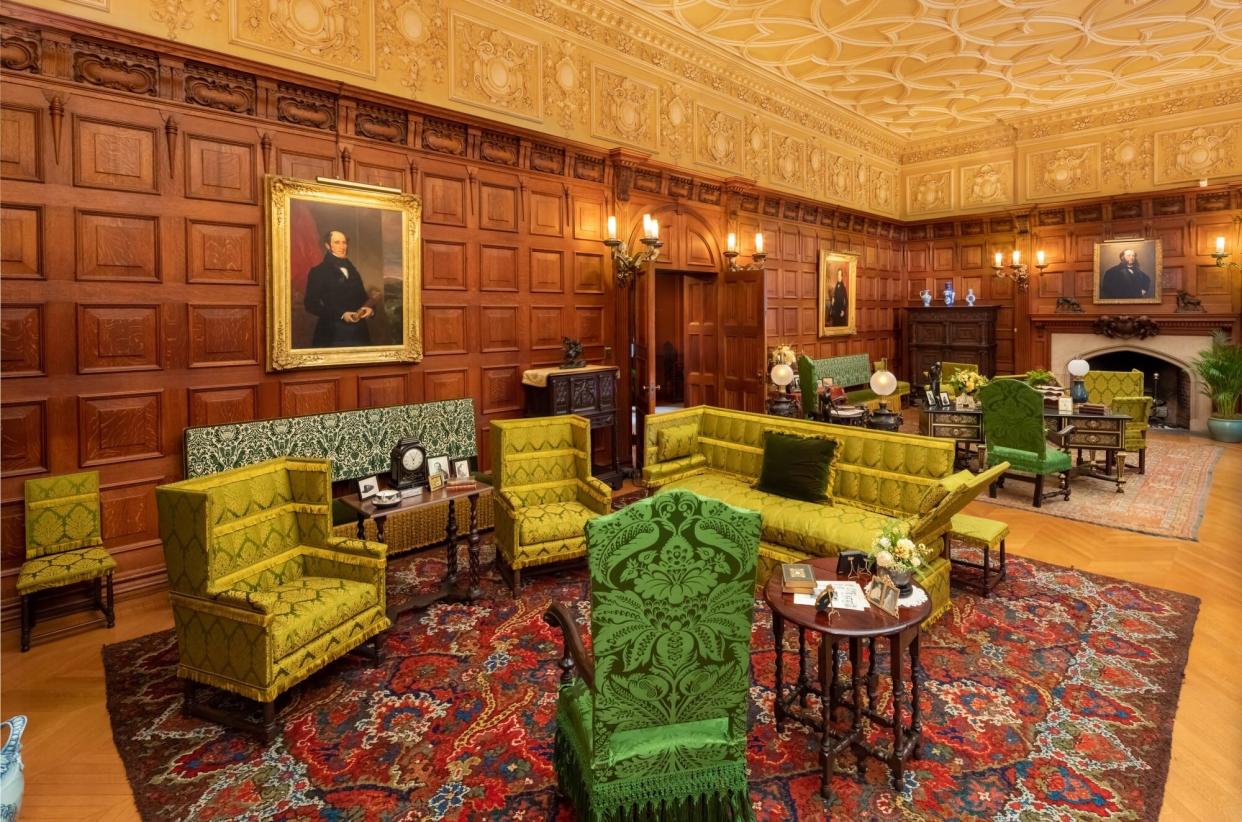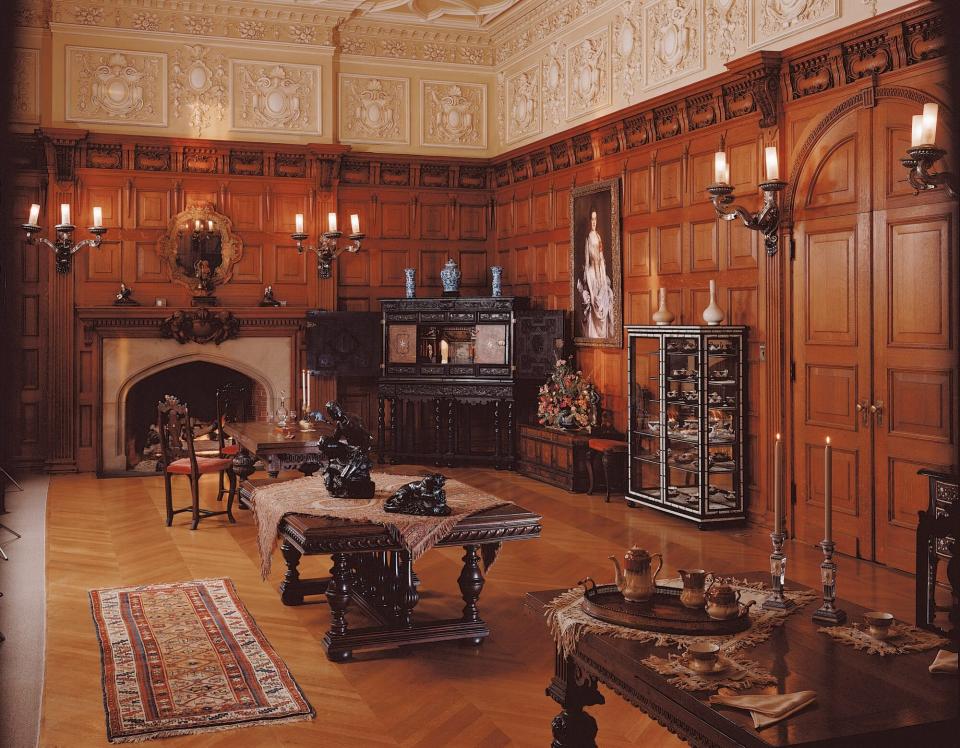The Biltmore's Oak Sitting Room Returned to Original Glory After 15 Years of Restoration Work

- Oops!Something went wrong.Please try again later.
Biltmore Company
Thanks to an exhaustive restoration project, for the first time in nearly 100 years, guests to Biltmore House in Asheville, North Carolina, can experience the Oak Sitting Room as it was during the Vanderbilt era.
Located between the bedrooms of George W. Vanderbilt and his wife Edith, the Oak Sitting Room served as a central part of the family apartment in Biltmore House. It was treated as a private living room for the couple and their daughter Cornelia from 1895-1914.
Aside from head housekeeper Emily King, only the family's closest guests were invited into the space, which also functioned as a private gallery for some of George's most prized collections, including a number of Rembrandt etchings.
Biltmore curator Lori Garst explained to House Beautiful, curators embarked on the restoration after the discovery of a 1902 letter in which a guest referred to the room as the "Rembrandt gallery." As it turns out, the Oak Sitting Room "had not been furnished correctly since the Biltmore House opened in 1930."
From research and planning to the reproduction of textiles and conservation work, returning the cherished space to its original glory took nearly 15 years to complete.

Biltmore Company
"Like detectives, Biltmore's Museum Services team members carefully sifted through photographs, letters, and other details for clues to offer clues as to how the room was furnished originally," a Biltmore House news release explains. "Once a furnishing plan was created, fabric examples found in storage were reproduced and our team of conservators began to repair and clean the furnishings to return them to their original appearance."
WATCH: Immersive Vincent van Gogh Exhibition Coming to the Biltmore
Today, several paintings of William H. Vanderbilt, George Vanderbilt's father, and other family members once again hang in the room. Other restored highlights include a suite of 17th-century in a rich green and gold damask, an elaborate Boulle-style desk with intricate brass inlay, and an ornate ebony cabinet-on-stand made in the Paris workshops in the 17th century.
Garst describes this room as "the heart" of the Biltmore founder. "It was a sort of sanctuary for the family, a place they may have retreated for solace and alone time," she said in a statement. "It also showcases Biltmore's founder as not only an aristocrat, but a lifelong scholar, collector, and patron of the arts."

